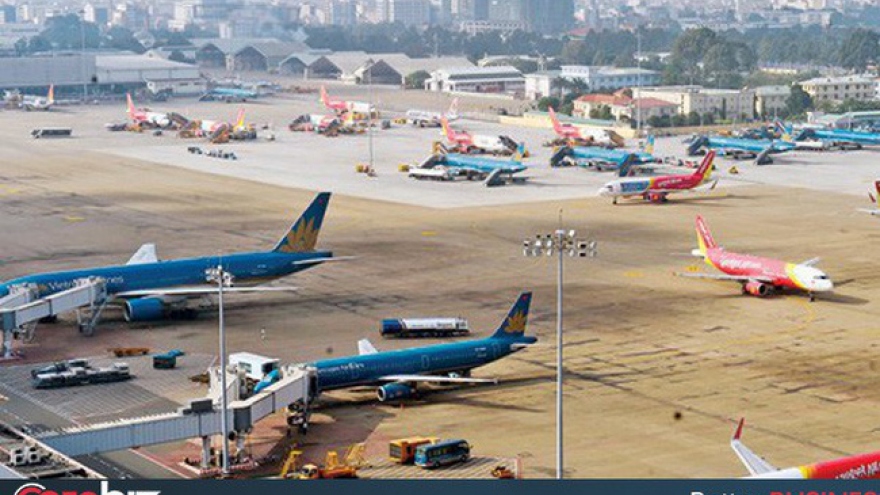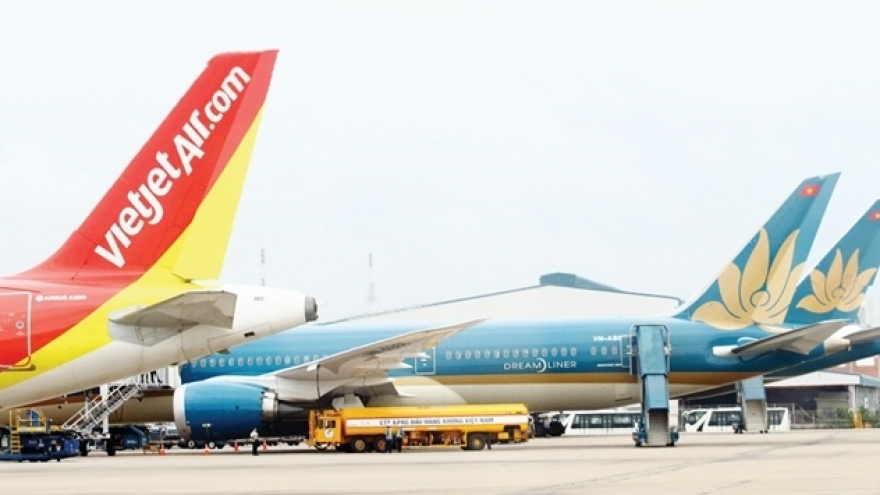Private capital to flow into aviation infrastructure projects
Many private investors are willing to pour money into aviation infrastructure, though the business field requires huge capital and a long time to recover capital.
 |
According to IATA (The International Air Transport Association), Vietnam will become the fifth fastest-growing aviation market in terms of international passengers and cargo to be transported. With a population of approximately 100 million, the domestic aviation market will witness average growth rate of 15% in the time to come.
Economists say Vietnam needs 10 air carriers to satisfy demand and create a healthy market.
Meanwhile, Vietnam’s aviation infrastructure is getting overloaded and the presence of new airlines will put pressure on airport infrastructure.
According to Airports Corporation of Vietnam (ACV), the airports of Noi Bai in Hanoi, Tan Son Nhat in HCM City, Cam Ranh in Khanh Hoa, Cat Bi in Hai Phong, Phu Quoc in Kien Giang and Lien Khuong in Lam Dong are all running beyond the designed capacity.
If Vietnam cannot solve the problems related to infrastructure, the aviation industry will not be able to develop.
Vietnam now has 21 airports with total capacity of 70 million passengers a year. The figure is just equal to the capacity of KLIA 1 and KLIA 2 in Malaysia in total (75 million passengers) and a little bit higher than Changi in Singapore (50 million passengers).
Foreign travelers complain they have to take two flights to get to Quy Nhon, Quang Ninh, Quang Binh, Thanh Hoa and Phu Quoc. They have to fly to Hanoi and HCMC and then wait hours for the next flights to the destination.
To satisfy high travel demand, Vietnam plans to have 26 airports by 2020 with total investment capital of US$10.5 billion. It is now implementing 11 projects, of which seven will be completed in the next three years.
Analysts believe that as the state’s resources remain limited, private investment is a good solution.
According to CAAV (Civil Aviation Authority of Vietnam), there are five airport projects with capital contribution from private investors now under implementation.
These include the Van Don International Airport, the terminal for international travelers of Cam Ranh Airport, and Phan Thiet, Cat Bi and Chu Lai Airports.
Van Don is the first privately invested airport in Vietnam. The other 21 operating airports are under ACV’s management.
Tran Dinh Thien, head of the Vietnam Economics Institute, praised the effectiveness of private investment in the field.
IPP, a private investor, initially planned to build Cam Ranh Airport within 36 months, but it needed only two-thirds of that time to finish construction.


